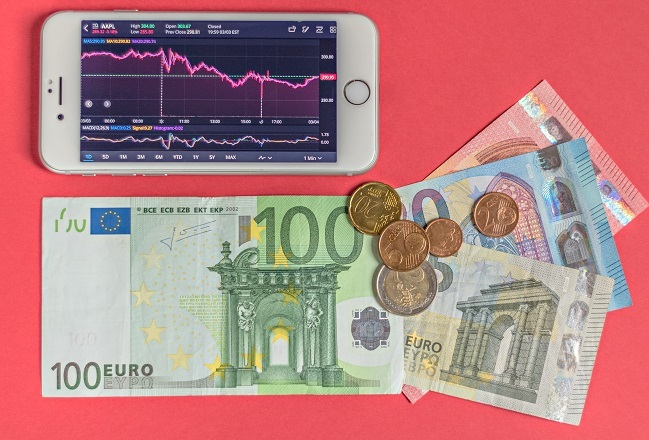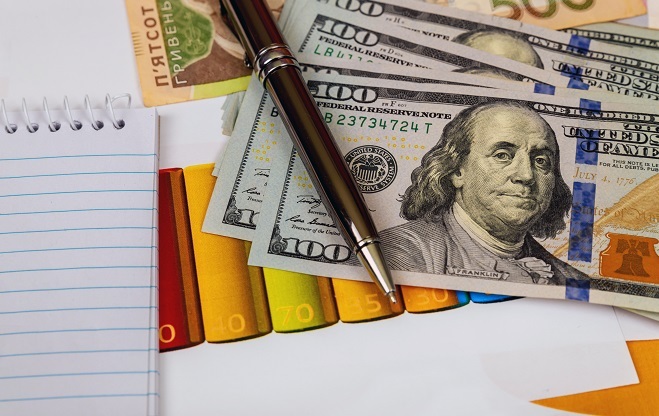
- Trending Categories
 Data Structure
Data Structure Networking
Networking RDBMS
RDBMS Operating System
Operating System Java
Java MS Excel
MS Excel iOS
iOS HTML
HTML CSS
CSS Android
Android Python
Python C Programming
C Programming C++
C++ C#
C# MongoDB
MongoDB MySQL
MySQL Javascript
Javascript PHP
PHPPhysics
Chemistry
Biology
Mathematics
English
Economics
Psychology
Social Studies
Fashion Studies
Legal Studies
- Selected Reading
- UPSC IAS Exams Notes
- Developer's Best Practices
- Questions and Answers
- Effective Resume Writing
- HR Interview Questions
- Computer Glossary
- Who is Who
What is the full form of EEA?
Introduction
Exchange Equalisation Account or EEA is a special account that embraces the United Kingdom’s gold reserve, international currencies along with the International Monetary Fund or IMF and Special Drawing Rights or SDRs.

This equalisation account was established in 1932 for providing a fund to check any financial drop down in the exchange value of any first class society.
Purpose of Exchange Equalization Account
The Exchange Equalisation Account or EEA is a fund that started as a revenue of the Majesty in the United Kingdom.. It occupies the country's special drawing rights that are normally conducted at the International Monetary Fund. Besides, this equalisation account forms an association with UK’s Reserve Tranche Position also known as RTP at the International monetary fund and have decided to keep the IMF under the administration of New Arrangements to Borrow or NAB, as these assets are a part of UK’s official association with international reserves. The RTP and NAB loans are a part of the National Loans Fund also known as NLF for which necessitates establishment of separate accounts.
EEA was established in 1932 for providing a fund to check any financial drop down in the exchange value of any first class society and therefore is the ultimate process for conducting any UK government exchange rate intervention
Against this backdrop, the foreign currency reserves are considered as back up funds for precautionary measures to meet any amendments required in the future in exchange rate policy or in the context of any unexpected revelation. These reserves also maintain international currency services for various government departments for making international payments for buying,selling and holding SDRs as per the requirement of the UK's membership for the International monetary fund.
According to the Exchange Equalisation Account Act 1979, the EEA can provide permission for investment of its funds in any assets designated in the currency of any country, for purchasing gold and acquiring SDR.
Establishment of Exchange Equalization Account
The EEA was established by Neville Chamberlain in 1932 followed by the turning off of the pound measure from gold trading. In 2015-16 HM Treasury along with its agent in a nationalised bank in England that continued with the proper functioning of the Exchange Equalisation Account for ensuring its utility for delivering and supplying funds when necessary to check any changes in the exchange value of the first class society and therefore is the ultimate process for conducting any UK government exchange rate intervention. Every year the Treasury agrees with a set of Key Performance Indicators also called KPIs in association with any bank so that each bank can provide a set of indicators for assessing the future efficiency of EEA management. An annual Service Level Agreement is framed between the Treasury association and the Bank that lay down the parameters for the reserve management. All the KPIs had a meeting in the 2015-16 .
Management of Exchange Equalization Account
The EEA is controlled by the revenue control organisation whose major objective is to monitor EEA just like the government body thereby ensuring the reserves are highly maintained so that it can meet current policy objectives or its amendment in the future. In connection to this, the government’s major aim is to preserve both the translucency and security of the reserves for ensuring the maintenance by the government regarding its ability in intervening in the foreign exchange market as per the requirement.

The major aim of the equalisation account is to curtail off the cost bearing the reserves and make sure that any kind of financial risk is limited through the selective choice of the portfolio and risk management practices. The Treasury’s play an essential role in choosing the right strategy composition for the attainment standard asset allocation of the reserves, including gold and achieving the policy objectives. Treasury can even make the benchmark asset allocation choice to minimise the chances of monetary risk along with return and translucency in line with the expected risk factors.
Significance of Exchange Equalization Account
The EEA has permission to make use of other financial tools like conventional bonding, bills, discount coupons and drifting rate notes along with the commercial paper issued by other national governments, precursory organisations and selected official specialised agencies. Apart from these it also includes spotting foreign currencies, handling transactions, swapping of currencies, notes, even repurchasing and reverse repurchasing agreements, forwarding rate agreements, SDRs and short term deposition in any nationalised banks.
Conclusion
The EEA was established by Neville Chamberlain in 1932 followed by the turning off of the pound measure from the gold exchange standard. The EEA has permission to make use of other financial tools like conventional bonding, bills, discount coupons and drifting rate notes along with the commercial paper issued by other national governments
FAQs
Q1.What is the Exchange stabilisation fund?
Ans: Answer- The Exchange Stabilization Fund also known as ESF is an emergency reserve account that is mostly accessed by the U.S. Department of Treasury for reducing the instability in its various financial units, like credit department, securities on financial services and foreign exchange markets.The ESF has three major instruments-financial instruments like the U.S. dollar or USD, international currencies, and special drawing rights.
Q2. What do you mean by the Gold exchange standard?
Ans: Answer- Gold-exchange standard is the monetary system where a specific currency of the nation is converted into the bills of the exchange made in a country and also where the currency is convertible into gold at a standard rate of exchange. Many countries gave their verdict on converting paper money into the gold standard, countries agreed to convert paper money into a fixed amount of gold. If a country uses the gold standard, sets a fixed price for gold and keeps the same as the selling and buying price,then that fixed price can determine the value of the currency.
Q3. What do you mean by special drawing rights?
Ans: Answer-Special drawing rights is a type of international monetary reserve currency developed by the International Monetary Fund which was established in 1969 and functions as an operational body for the existing money reserves of the member countries. It was created in response to the major concerns about the limitations of gold and dollars as the only source of international accounts, SDRs are the sole supplement of the international liquidity by maintaining the standard reserve currencies.

